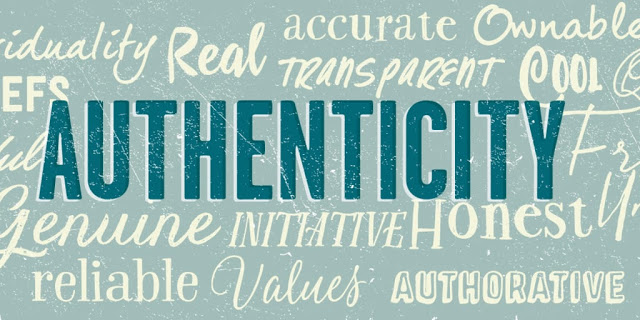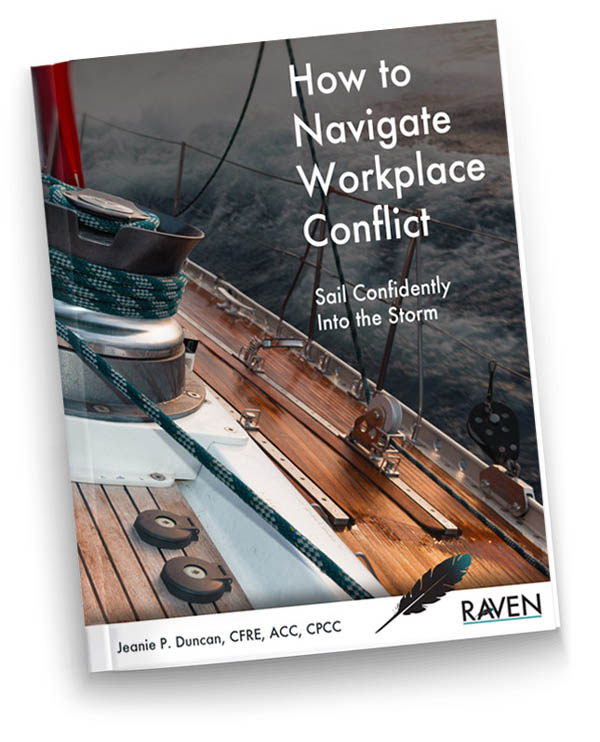
Dec 7, 2020 | Authenticity, Intention, Leadership, Personal Brand, Truth

I listened to a podcast recently featuring Seth Godin and his latest book, The Practice, where he proclaimed, “authenticity is a crock. Authenticity is overrated. Authenticity is a trap. No one wants you to be authentic.”
I’m a huge Seth Godin fan – I love his work and principles, but I completely disagree with him on this position. He professes that his position on authenticity is controversial, and I couldn’t agree more!
According to Godin, the only time in our lives when we’re truly authentic is when we’re an infant. When something doesn’t go our way, we spiral into a tantrum. Post toddler, we lose that raw, unabashed authenticity because our decisions and actions become calculated, carried out with intent and purpose (even if subconscious).
For example, you may not like something your boss does, but you’re not likely to go run screaming into their office, as that’s not likely to get you your desired result. What you do instead is weigh actions and consequences, navigate the political landscape, and moderate your behaviors. Godin considers this inauthentic – what you deep down most want to do is not what you end up doing in your actions.
“If you go see a concert,” he says “you don’t want the authentic musician. You want that musician (despite exhaustion from a 20-city road tour) to give you the best performance of their day, their week, their month. If you need surgery, you want the surgeon to ignore that they had an argument with their spouse and instead bring the best version of themselves. That’s what we want in every interaction.”
Godin continues, offering that people don’t want authenticity. What people want from you is consistency, humanity, and empathy…for you to deliver the best, most talented, skilled version of yourself. And the best way to deliver this is to do what comes naturally to you.
I read this. I hear this. And my response is, this IS authenticity – at least my definition of it.
For two weeks now, I’ve churned on Godin’s viewpoint that “authenticity is a crock.” I’ve wrangled with it internally and debated it with colleagues. Where I’ve landed is this:
- I have a deeply held belief about what authenticity is.
- To me, consistently delivering who you are IS being authentic. If humanity and empathy is core to who you are and you show up and deliver that, then you’re being authentic.
- Authenticity is being true to who you are, aligning with and living your values, and delivering on your personal brand promise day in and day out, regardless of whether or not people are watching.
- Being authentic is being the truest, realest me…the me-ist me I can be.
No, I’m not going to run into my boss’ office and throw a tantrum because something didn’t go as I had hoped. I refrain from doing this, not because I’m being inauthentic, but because my authentic self functions in a world where I’m keenly aware of rules, protocols, and the political landscape.
With this example and many more, I’ve learned about cause and effect, actions and consequences, and the culture of “this is the way we do things around here.” These lessons have saved my life, my career, and relationships. No, I won’t necessarily live out my unadulterated, unfiltered, raw self out on the street, in the boardroom, or even at my kitchen table necessarily, but it doesn’t mean that I’m not being congruent and authentic.
My clients know my skill, talent, values, and qualities. They know that when they work with me, they’re going to get these things fully and consistently. And I’m human, I can have a bad day, I can get overwhelmed and exhausted, and when these things happen, the impact can show up in my work. When it’s likely to, I name it, we adjust and adapt, change or reschedule…whatever the situation calls for. This is authenticity.
 Hi, I’m Jeanie Duncan. I work with individuals and organizations as a transformation partner to help them unlock their Truth, discover authentic value, and create meaningful impact in the world. I believe when we are truly aligned with our purpose, we can live and perform at our highest potential. With over 25 years of experience as an executive, CEO, consultant, coach, and writer, I offer strategic, knowledgeable, and experienced guidance for those who are ready to take the courageous leap toward true transformation.
Hi, I’m Jeanie Duncan. I work with individuals and organizations as a transformation partner to help them unlock their Truth, discover authentic value, and create meaningful impact in the world. I believe when we are truly aligned with our purpose, we can live and perform at our highest potential. With over 25 years of experience as an executive, CEO, consultant, coach, and writer, I offer strategic, knowledgeable, and experienced guidance for those who are ready to take the courageous leap toward true transformation.

Sep 14, 2016 | Conflict Management, Leadership, Management
 I’ve noticed that so many conversations in the organizations I consult with revolve around conflict in one way or another. Whether it stems from unhealthy “competition” among peers, an ineffective management approach, or frustration from the bottom up, navigating conflict is challenging. It is just human nature to avoid conflict, particularly in the conflict-averse United States, where it’s usually our last resort to attend directly to the issues, tensions, and challenges at the heart of conflict.
I’ve noticed that so many conversations in the organizations I consult with revolve around conflict in one way or another. Whether it stems from unhealthy “competition” among peers, an ineffective management approach, or frustration from the bottom up, navigating conflict is challenging. It is just human nature to avoid conflict, particularly in the conflict-averse United States, where it’s usually our last resort to attend directly to the issues, tensions, and challenges at the heart of conflict.
My clients are often relieved to learn that conflict management – and conflict resolution – are not doomed. In fact, building collaborative teams that can work through potentially challenging situations together is remarkably simple. It just takes a lot of practice, commitment, and perseverance.
In my new ebook, How to Navigate Workplace Conflict: Sail Confidently into the Storm, I’ve collected some of the best advice, techniques, and tips for managing conflict instead of avoiding it. Conflict in the workplace is normal and sometimes even necessary. The ability to have healthy, productive conflict is the sign of a mature, sustainable relationship. To develop your team’s conflict management abilities, you first must establish strong, vulnerability-based trust among the various members of your team. You must establish clear alignment among goals and expectations for the team and everyone on it, learn how to integrate and consider varying perspectives and personality types in envisioning solutions, and bridge the divides among individuals and functional groups.
If you would like to focus on improving your conflict management behaviors and you’re open to learning some practical tools for doing just that, please click here to receive your free copy (for a limited time) of my new ebook, How to Navigate Workplace Conflict: Sail Confidently into the Storm.
The first 10 respondents will also get a free half-hour strategy session with Raven Consulting Group.
 About Jeanie Duncan: Jeanie is President of Raven Consulting Group, a business she founded that focuses on organizational change and leadership development in the nonprofit sector. She is a senior consultant for Raffa, a national firm working with nonprofit clients to lead efforts in sustainability and succession planning, executive transition and search. Additionally, Jeanie serves as adjunct faculty for the Center for Creative Leadership, a top-ranked, global provider of executive leadership education.
About Jeanie Duncan: Jeanie is President of Raven Consulting Group, a business she founded that focuses on organizational change and leadership development in the nonprofit sector. She is a senior consultant for Raffa, a national firm working with nonprofit clients to lead efforts in sustainability and succession planning, executive transition and search. Additionally, Jeanie serves as adjunct faculty for the Center for Creative Leadership, a top-ranked, global provider of executive leadership education.

Jul 19, 2016 | Leadership, Transition & Change

In 2011, the Meyer Foundation and CompassPoint Nonprofit Services produced a research report “Daring to Lead” that surveyed 3,000 nonprofit executive directors and revealed a forecast of significant impending workplace transitions, with 67% of executives reporting that they expect to leave their jobs over the next five years.
Today, while we see many leadership transitions occurring among the Baby Boomer population, “what was once characterized as a pipeline problem can now be described as a bottleneck, as many individuals are choosing to work beyond the traditional retirement age due to a variety of reasons, including a prolonged economic recession,” reports the William and Flora Hewlett Foundation in “Moving Arts Leadership Forward.”
This reality requires organizations to examine its greatest asset – its people, their roles, and career paths – in strategic and creative ways. Workplaces can expect a robust boomer presence through at least 2034, when the youngest boomers will turn 70. This reality impacts Gen X-ers and Millennials aspiring to executive positions, where the wait time for succession is often longer than they would like.
While there was once a question of whether there were enough capable professionals to succeed an organization, now the challenge is more focused on developing and retaining early- and mid-career professionals in an environment of limited opportunities for formal advancement.
While not alone, nonprofits as a sector have considerable challenges in addressing this leadership reality, as they:
– Tend to be small-to-medium size operations and, as a result, are not likely to have as many resources to address strategy, planning, and leadership development.
– Are often institutions with a culture of group decision making, where business gets done through committees and boards of directors – a process that can create added delays and complexity.
– Can be highly funder-dependent, and any transition – especially with an organization’s top leadership – can threaten these vital relationships and the very future of the organization itself.
– Frequently are lead by an original founder or long-time executive. Over time, the top leader and the organization itself are inextricably connected. When this leader goes away, so could the organization.
– Often do not have sufficient reserves (if any at all) to weather an economic downturn, exposing the organization to significant financial vulnerabilities. Leadership transitions and professional development of its people, if not handled properly, can further intensify this situation.
– Sometimes have boards of directors who are unprepared to handle the transition and select and support new leaders. Despite over a decade of attention to this issue, executives and boards are still reluctant to talk proactively about succession, with just 17% reporting that their organizations had a written succession plan.
We must not overlook these pivotal leadership priorities for the development opportunities that they are. Properly and proactively managed, these changes and transitions provide an organization a period to pause, reflect, regroup, and focus. It’s a unique opportunity to examine strategic direction, priorities, and chart a future course. The key is not merely to endure it, but to emerge stronger and more dynamic from it.
You may be interested in these related blog posts:
Executive Leadership Transition and Organization Preparedness
Succession Planning: Conversation Avoided
 About Jeanie Duncan: Jeanie is President of Raven Consulting Group, a business she founded that focuses on organizational change and leadership development in the nonprofit sector. She is a senior consultant for Raffa, a national firm working with nonprofit clients to lead efforts in sustainability and succession planning, executive transition and search. Additionally, Jeanie serves as adjunct faculty for the Center for Creative Leadership, a top-ranked, global provider of executive leadership education.
About Jeanie Duncan: Jeanie is President of Raven Consulting Group, a business she founded that focuses on organizational change and leadership development in the nonprofit sector. She is a senior consultant for Raffa, a national firm working with nonprofit clients to lead efforts in sustainability and succession planning, executive transition and search. Additionally, Jeanie serves as adjunct faculty for the Center for Creative Leadership, a top-ranked, global provider of executive leadership education.

May 24, 2016 | Leadership

Leaders often fall into the trap of thinking that working harder will get them ahead—and into that next leadership role. Hard work will only take you so far, though. The strongest leaders are self-aware and know how to use their strengths strategically in a way that is both to their own advantage and benefits their organization and its people.
As I wrote about in The Brand of You, you’re constantly making impressions on others, from what you say or do to how you react and interact. And every impression you make can be an asset or a liability as you engage in the tasks and roles of leadership.
It’s essential that you become a self-aware leader so that you can make the most of the opportunities you have to influence others. Self-awareness is a vital, yet often-overlooked quality among other, more prominent assets like vision, strategic thinking, and influence. You never want to be the last one to know about a weakness or a missed opportunity to leverage your strengths. In fact, self-awareness can be the deciding factor in your success as a leader.
So, what do I mean by being self-aware?
- Being aware of your own strengths and weaknesses. When you know your assets (strengths) you can bring them to bear appropriately; when you have a clear view of your weaknesses and/or behaviors that create tension or divide, you can mitigate the negative impact or derailment.
- Having an ability to read others – being able to assess their styles and preferences, as well as their strengths and weaknesses. This isn’t about manipulating other people, but rather about paying attention and tuning in to those around you. Knowing others’ styles and preferences helps not only when it comes to influencing others, but also when it comes to putting together a high-performing team. Success depends on your ability to recognize strengths as well as potential deficits so that you can best align your talent with the right roles and responsibilities. (This skill is also helpful in hiring people with complementary abilities and leveraging the collective strengths of the team.)
- Paying attention to your behaviors and the effects of what you say or do on others. Do you attempt to motivate and inspire people to achieve their goals? Do you try to advocate for your ideas because you’re convinced they’re right? Do you attempt to negotiate a bridge between competing opinions? We all have our own natural preferences and styles of influencing others, managing conflict and communicating. One thing to keep in mind is how the same behavior might have different impact on different people. It’s a good idea to check in regularly and seek feedback from those with whom you work.
Here are a few good tips for increasing your self-awareness and developing yourself into a more effective leader:
- Pay attention. Notice your behavior and the impact it has on others.
- Complete instruments that reveal your personality type and natural preferences (for example, the MBTI and 360 assessments). Work with an individual certified in interpreting those results who can help you draw connections and lift out insights along with recommending developmental tools.
- Find an executive leadership program or experiential learning program that has a strong coaching component emphasizing your personal style.
- The next time you lead a project or team meeting, ask a colleague to observe a particular behavior or two on which you’d like feedback. Afterward, seek his or her thoughts on the situation, your observable behavior, and the impact it had on them, others, or the task at hand.
Here’s a word of caution: Being (or becoming) self-aware isn’t the whole story. I’ve found that the most effective, most fulfilled leaders are committed to leveraging their strengths and mitigating their weaknesses. Even more? They check their egos and acknowledge that it takes a team of individuals with diverse and complementary strengths and talents to collaborate and achieve goals.
There’s a great quote in a Harvard Business Review article by Anthony K. Tjan, co-author of the book Heart, Smarts, Guts, and Luck: “The trinity of self-awareness is to know thyself, improve thyself, and complement thyself.”
It takes an array of competencies to lead people and organizations—from the abilities to communicate well and delegate effectively to a great capacity for turning strategic thinking into tactics that get the desired results. I encourage you to continue developing yourself in those areas, but remember: Self-awareness is the key to your success as a leader. Understanding your own abilities and natural tendencies is the first step in being able to harness the talents and skills of others.
See my other related blog posts:
 About Jeanie Duncan: Jeanie is President of Raven Consulting Group, a business she founded that focuses on organizational change and leadership development in the nonprofit sector. She is a senior consultant for Raffa, a national firm working with nonprofit clients to lead efforts in sustainability and succession planning, executive transition and search. Additionally, Jeanie serves as adjunct faculty for the Center for Creative Leadership, a top-ranked, global provider of executive leadership education.
About Jeanie Duncan: Jeanie is President of Raven Consulting Group, a business she founded that focuses on organizational change and leadership development in the nonprofit sector. She is a senior consultant for Raffa, a national firm working with nonprofit clients to lead efforts in sustainability and succession planning, executive transition and search. Additionally, Jeanie serves as adjunct faculty for the Center for Creative Leadership, a top-ranked, global provider of executive leadership education.

Apr 26, 2016 | Leadership, Personal Brand

In my related blog post, The Brand of You, I introduced a framework around leadership brand, as well as a few tools and practices to help you think about and develop your leadership brand. To briefly recap – your brand is what people say about you when you’re not in the room. It’s not what you say…it’s what other people say about you that counts here.
You already have a brand whether you realize it or not, so it’s important to get conscious about it and proactively shape and define how you most want to show up and be seen in the world, influence others, and get results.
Here, we take the ideas one step further – from knowing and exhibiting your ‘current’ brand to considering your future, or ‘aspirational,’ brand. When you contemplate your career development path and goals, it’s important to realize that what got you here won’t necessarily take you there. It requires you to reflect on “if this is what I desire and where I want to go, then what needs to change or evolve in order for me to get there?”
Your Leadership Brand
Here’s an exercise to help you create your aspirational leadership brand: Think out to a future point – 6 months, 1 year, 3 years, 5 years – and envision that you have the most rich and fulfilling life you can imagine (both personal and professional). How might your current way of showing up and presenting yourself need to change or evolve in order for you to achieve this vision? Here are a few questions to guide your thinking:
- What is the impact you most want to have on others or make in this world?
- How would you define your purpose or intention?
- Is this tied to a particular position or role you aspire to?
- What top three things do you want to deliver?
- What do you want to be known for?
- What is your reputation?
- How can your brand be boiled down into one bold, powerful, enrolling statement for you to use as your slogan or motto?
- What action steps will you take to create your future brand?
- Select two images that represent: 1) How are you known now. 2) How you would like to be known in the future. Post these in a place where you will see them every day.
In my executive coaching work, I partner with clients to help them define both their current and aspirational leadership brands. One recent example was with a nonprofit executive who held the role of COO in her organization and was an internal candidate for CEO.
She had held the COO position for ten years, was highly competent and experienced in her role, and well regarded by her colleagues. In preparing for her candidacy and the interview process, she needed to present herself in a new light, as the leader who was ideal to transition from leading a key organization function to leading the entire enterprise. It was helpful to clearly define her current brand as well as her aspirational brand not only for her benefit, but also to help the board of trustees and search committee visualize her as the right leader in this role.
She vividly imagined herself appointed as CEO and being in that role for a year, experiencing great success for herself, the organization, and its people. In doing so, she was able to define her future brand in a vivid, concise way. She compared this to her current brand and was able to develop specific actions needed to begin “acting as if” she was this future brand now. Her colleagues and the board were able to see her enhanced level of executive presence, influence, and confidence, which served her exceptionally well in the process, and was ultimately key in her being appointed as the new CEO.
Many people dismiss image building as superficial and unimportant; however, leaders benefit from knowing how they come across to others and how their behaviors impact different people. A lack of awareness and focus on this can derail or prevent leaders from advancing on their career path.
A study of 150 senior executives who attended CCL’s Leadership at the Peak program shows that the image, or brand, leaders convey has a significant correlation to perceptions of their leadership skill. In this study, leaders who conveyed a strong vision were rated higher on several important factors than those who conveyed a weaker vision – factors such as the ability to lead change, being dynamic, competence in strategic planning, being farsighted, inspiring commitment, being original, and having a strong executive image. Each of these factors is tied to specific behaviors and can therefore be improved through awareness and practice.
As in the CEO example above, once you identify specific elements for how you’d like to evolve your brand, seek out specific ways to practice in order to test drive and ‘anchor in’ new ways of being. Here are a few ideas, and you probably have some thoughts as well:
- Lead a project that might be a stretch opportunity, demonstrating your ability to be seen outside the scope of your current image and brand.
- Consider your area of expertise and seek out opportunities for public speaking where key influencers or stakeholders can see your leadership in action.
- Take a more active role in speaking or presenting at board meetings.
- Whenever possible, be seen as a strategic thought leader – to solve a problem, leverage an opportunity, etc.
You may also be interested in reading this related blog post: The Brand of You
Resources and Suggested Reading:
Criswell, C., & Campbell, D. (2008). Building an authentic leadership image. Greensboro, NC: Center for Creative Leadership.
Kossek, E. & Lautsch, B. (2008). CEO of me: creating a life that works in the flexible job age. Saddle River, NJ: Prentice Hall.
Peters, T. (1999). The brand called you. New York, NY: Knopf Doubleday Publishing Group.
Schawbel, D. (2010). Me 2.0. New York, NY: Kaplan Publishing.
 About Jeanie Duncan: Jeanie is President of Raven Consulting Group, a business she founded that focuses on organizational change and leadership development in the nonprofit sector. She is a senior consultant for Raffa, a national firm working with nonprofit clients to lead efforts in sustainability and succession planning, executive transition and search. Additionally, Jeanie serves as adjunct faculty for the Center for Creative Leadership, a top-ranked, global provider of executive leadership education.
About Jeanie Duncan: Jeanie is President of Raven Consulting Group, a business she founded that focuses on organizational change and leadership development in the nonprofit sector. She is a senior consultant for Raffa, a national firm working with nonprofit clients to lead efforts in sustainability and succession planning, executive transition and search. Additionally, Jeanie serves as adjunct faculty for the Center for Creative Leadership, a top-ranked, global provider of executive leadership education.

Apr 19, 2016 | Leadership, Transition & Change
 As a newly appointed executive leader, one of the most important priorities is to establish your leadership agenda for the first twelve months. Typically this follows the 90-day entry plan and outlines what you expect to accomplish at the conclusion of your first year. Additionally, it can be an ideal tool for your board to measure your first year performance.
As a newly appointed executive leader, one of the most important priorities is to establish your leadership agenda for the first twelve months. Typically this follows the 90-day entry plan and outlines what you expect to accomplish at the conclusion of your first year. Additionally, it can be an ideal tool for your board to measure your first year performance.
If your organization has a current strategic plan, this document is aligned closely with that. However, if strategic plan development is a first year action item, this 12-month leadership agenda can help organize your thinking and outline key goals and strategies to chart the course initially.
Helpful tips in developing your agenda:
- Co-design the leadership agenda with your board chair, involving members of your board personnel committee or transition committee, if existing.
- Keep the document focused at a high, strategic level. Incorporate an adjoining action plan for your own personal use in implementation.
- In goal setting, balance realism with the appropriate degree of stretch to help manage expectations.
- Keep the leadership agenda front and center, using it as a guide to organize your weekly priorities and as a report card for board meetings.
- Adapt and revise the document through the course of the year. This is a living, breathing tool – things change, and you’ll learn a lot along the way that will inform this roadmap.
To help you get started, I’ve included a sample template here (PDF). Good luck charting your path, and remember “If you don’t know where you are going, any road will get you there.” – Lewis Carroll
 About Jeanie Duncan: Jeanie is President of Raven Consulting Group, a business she founded that focuses on organizational change and leadership development in the nonprofit sector. She is a senior consultant for Raffa, a national firm working with nonprofit clients to lead efforts in sustainability and succession planning, executive transition and search. Additionally, Jeanie serves as adjunct faculty for the Center for Creative Leadership, a top-ranked, global provider of executive leadership education.
About Jeanie Duncan: Jeanie is President of Raven Consulting Group, a business she founded that focuses on organizational change and leadership development in the nonprofit sector. She is a senior consultant for Raffa, a national firm working with nonprofit clients to lead efforts in sustainability and succession planning, executive transition and search. Additionally, Jeanie serves as adjunct faculty for the Center for Creative Leadership, a top-ranked, global provider of executive leadership education.


 Hi, I’m Jeanie Duncan. I work with individuals and organizations as a transformation partner to help them unlock their Truth, discover authentic value, and create meaningful impact in the world. I believe when we are truly aligned with our purpose, we can live and perform at our highest potential. With over 25 years of experience as an executive, CEO, consultant, coach, and writer, I offer strategic, knowledgeable, and experienced guidance for those who are ready to take the courageous leap toward true transformation.
Hi, I’m Jeanie Duncan. I work with individuals and organizations as a transformation partner to help them unlock their Truth, discover authentic value, and create meaningful impact in the world. I believe when we are truly aligned with our purpose, we can live and perform at our highest potential. With over 25 years of experience as an executive, CEO, consultant, coach, and writer, I offer strategic, knowledgeable, and experienced guidance for those who are ready to take the courageous leap toward true transformation. 

 I’ve noticed that so many conversations in the organizations I consult with revolve around conflict in one way or another. Whether it stems from unhealthy “competition” among peers, an ineffective management approach, or frustration from the bottom up, navigating conflict is challenging. It is just human nature to avoid conflict, particularly in the conflict-averse United States, where it’s usually our last resort to attend directly to the issues, tensions, and challenges at the heart of conflict.
I’ve noticed that so many conversations in the organizations I consult with revolve around conflict in one way or another. Whether it stems from unhealthy “competition” among peers, an ineffective management approach, or frustration from the bottom up, navigating conflict is challenging. It is just human nature to avoid conflict, particularly in the conflict-averse United States, where it’s usually our last resort to attend directly to the issues, tensions, and challenges at the heart of conflict.



 About Jeanie Duncan: Jeanie is President of Raven Consulting Group, a business she founded that focuses on organizational change and leadership development in the nonprofit sector. She is a senior consultant for Raffa, a national firm working with nonprofit clients to lead efforts in sustainability and succession planning, executive transition and search. Additionally, Jeanie serves as adjunct faculty for the Center for Creative Leadership, a top-ranked, global provider of executive leadership education.
About Jeanie Duncan: Jeanie is President of Raven Consulting Group, a business she founded that focuses on organizational change and leadership development in the nonprofit sector. She is a senior consultant for Raffa, a national firm working with nonprofit clients to lead efforts in sustainability and succession planning, executive transition and search. Additionally, Jeanie serves as adjunct faculty for the Center for Creative Leadership, a top-ranked, global provider of executive leadership education.


 As a newly appointed executive leader, one of the most important priorities is to establish your leadership agenda for the first twelve months. Typically this follows the 90-day entry plan and outlines what you expect to accomplish at the conclusion of your first year. Additionally, it can be an ideal tool for your board to measure your first year performance.
As a newly appointed executive leader, one of the most important priorities is to establish your leadership agenda for the first twelve months. Typically this follows the 90-day entry plan and outlines what you expect to accomplish at the conclusion of your first year. Additionally, it can be an ideal tool for your board to measure your first year performance.
Recent Comments